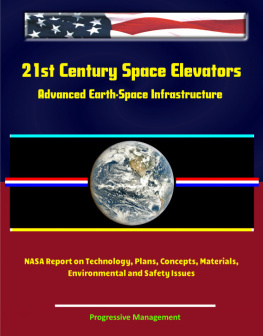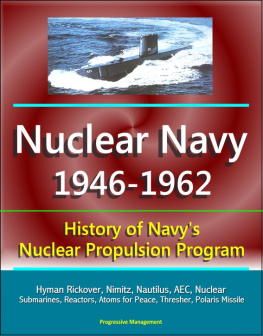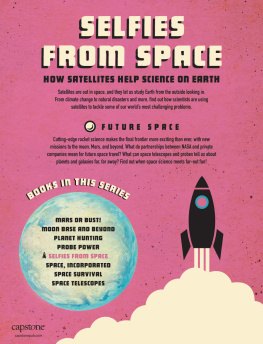21st Century Space Elevators - AdvancedEarth-Space Infrastructure: NASA Report on Technology, Plans,Concepts, Materials, Environmental and Safety Issues
Edition: Version 1.0 01/2011
NASA, National Aeronautics and SpaceAdministration
Smashwords Edition
Copyright 2011 Progressive Management
Questions? Suggestions? Comments? Concerns?Please contact the publisher directly at
Remember, the book retailer can't answer yourquestions, but we can!
* * * * * * * * * * *
Smashwords Edition, License Notes
This ebook is licensed for your personalenjoyment only. This ebook may not be re-sold or given away toother people. If you would like to share this book with anotherperson, please purchase an additional copy for each person youshare it with. If you're reading this book and did not purchase it,or it was not purchased for your use only, then you should returnto Smashwords.com and purchase your own copy. Thank you forrespecting the hard work of this author.
* * * * * * * * * * *
This is a privately authored news service andeducational publication of Progressive Management. Our publicationssynthesize official government information with original material -they are not produced by the federal government. They are designedto provide a convenient user-friendly reference work to uniformlypresent authoritative knowledge that can be rapidly read, reviewed,or searched. Vast archives of important data that might otherwiseremain inaccessible are available for instant review no matterwhere you are. This e-book format makes a great reference work andeducational tool. There is no other reference book that is asconvenient, comprehensive, thoroughly researched, and portable -everything you need to know, from renowned experts you trust. Forover a quarter of a century, our news, educational, technical,scientific, and medical publications have made unique and valuablereferences accessible to all people. Our e-books put knowledge atyour fingertips, and an expert in your pocket!

Space Elevators
An Advanced Earth-Space Infrastructure forthe New Millennium
Marshall Space Flight Center, Huntsville,Alabama
1.1 Introduction: What is a SpaceElevator?
A space elevator is a physical connectionfrom the surface of the Earth to a geostationary Earth orbit (GEO)above the Earth 35,786 km in altitude. Its center of mass isat the geostationary point such that it has a 24-hr orbit and staysover the same point above the equator as the Earth rotates on itsaxis. The vision is that a space elevator would be utilized as atransportation and utility system for moving people, payloads,power, and gases between the surface of the Earth and space. Itmakes the physical connection from Earth to space in the same way abridge connects two cities across a body of water.
The Earth to GEO space elevator is notfeasible today, but could be an important concept for the futuredevelopment of space in the latter part of the 21st century. It hasthe potential to provide mass transportation to space in the sameway highways, railroads, power lines, and pipelines provide masstransportation across the Earths surface. The low energyrequirements for moving payloads up and down the elevator couldmake it possible to achieve cost to orbit <$10/kg. The potentialfor low-cost mass transportation to space makes consideration ofthe technology paths required for space elevator construction veryimportant today. The technology paths are beneficial to many otherdevelopments and can yield incremental benefits as progress is madetoward making space elevator construction feasible.
1.2 Key Findings From the Workshop
A number of issues were raised and resolvedduring the workshop that has helped to bring the space elevatorconcept out of the realm of science fiction and into the realm ofpossibility. These key findings included the following:
1. Materials technology needed for spaceelevator construction is in the development process in laboratoriestoday. Continued research will likely produce the high-strengthcarbon nanotube materials needed for efficient space elevatorconstruction and for a wide variety of new and improvedproducts.
2. The tallest structure today is 629 m inheight. Buildings and towers can be constructed many kilometers inheight today using conventional construction materials and methods.These heights have not been attempted because there has not been ademonstrated need. Advanced materials and new construction methodscould make it possible to construct towers tens, hundreds, andperhaps thousands of kilometers in height.
3. A tether structure hanging down from GEOconnected to a tall tower constructed up from the Earth appears tobe the most efficient and technically feasible method for spaceelevator construction.
4. Climatic conditions at the equatorial zoneare very mild in comparison to more northern and southernlatitudes, making construction along the equator ideal from aweather hazard standpoint. It is not physically possible forhurricanes and tornados to form at the equator.
5. The space elevator structure is inherentlyflexible over its great length and can be designed to avoid majorhazards. Minor hits from asteroid debris are inevitable and willrequire standard repair procedures. A simple analogy is to think ofthe space elevator structure as a 36,000-km-long highway that willrequire ongoing maintenance and repair.
The space elevator concept is incrediblylarge and complex, but no issues were found to be without someobvious course for resolution. Given proper planning for thedevelopment of critical technologies, it appears that spaceelevator construction could become feasible.
1.3 Future Directions
Five primary technology thrusts wereidentified as critical to the development of space elevators in the21st century. All have many other near-term applications for newproducts and services on Earth and in space. They are asfollows:
1. Develop advanced high-strengthmaterials like the graphite, alumina, and quartz whiskers thatexhibit laboratory strengths >20 GPa. Continue development ofthe carbon nanotube materials that exhibit strengths 100 timesstronger than steel. Introduce these new lightweight, high-strengthmaterials to the commercial, space, and military markets for newand improved product developments (see 3.1 Materials).
2. Continue development of space tethertechnologies for space transportation systems to gainexperience in the deployment and control of long structures.Utilize higher strength materials as they become available.Continue analysis and plan for demonstration of momentum exchangeand low-Earth orbit (LEO) space elevator facilities for low-cost,in-space transfer to GEO (see 3.2 Tension Structures).
3. Introduce lightweight compositestructural materials to the general construction industry forthe development of tall tower and building construction systems.Foster the development of multi kilometer height towers forcommercial applications; i.e., communications, scienceobservatories, and launch platforms (see 3.3 CompressionStructures).
4. Develop high-speed electromagneticpropulsion for mass transportation systems, launch assistsystems, and high-velocity launch rails. Integrate electromagneticpropulsion devices into conventional construction industry systems;i.e., doors, elevators, conveyors, etc. (see 3.4 ElectromagneticPropulsion).
5. Develop transportation, utility, andfacility infrastructures to support space construction andindustrial development. Key components include highly reusablespace launch systems, reusable in space transportation, and spacefacility support from LEO to GEO (see 3.5 SupportingInfrastructures). Advances in these five areas over the next 10 to20 years will lay the foundation for future space elevatordevelopments. Other benefits to space transportation, Earth-basedinfrastructures, products, and services are evident and arediscussed in the details of this publication.
Next page
















